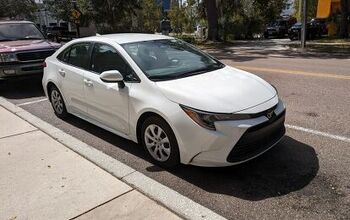AAA: Extreme Temps Hurt EV Range
Yes, we know water is wet too, but this study from the AAA provides some interesting findings regarding how extreme temperatures affect the driving range of electric vehicles.
Apparently, the extreme temperature problem cuts both ways
Vehicles were tested for city driving to mimic stop-and-go traffic, and to better compare with EPA ratings listed on the window sticker. The average EV battery range in AAA’s test was 105 miles at 75°F, but dropped 57 percent to 43 miles when the temperature was held steady at 20°F. Warm temperatures were less stressful on battery range, but still delivered a lower average of 69 miles per full charge at 95°F.
AAA performed testing between December 2013 and January 2014. Each vehicle completed a driving cycle for moderate, hot and cold climates following standard EPA-DOE test procedures. The vehicles were fully charged and then “driven” on a dynamometer in a climate-controlled room until the battery was fully exhausted.
Anyone who has spent time in Texas in the summer knows that high temperatures are sufficient to render your phone too hot to use, and the cold is notoriously harsh on battery life for any electronic device, let alone an electric car. But how about the use of wipers, HVAC systems and other essentials for winter (and well, summer) driving, all of which requires battery power when used in an EV.
In temperate climates like Southern California, EVs will always be a viable, 365-day proposition. In cold countries like Norway, where driving distances are short, fuel is astronomically expense and taxes are high for gasoline and diesel cars, EVs can make sense. But given the drops in range when the temperatures hit either end of the scale, it’s tough to see how they can become a viable, mass-market proposition in the near future for much of the United States and Canada.
More by Derek Kreindler
Latest Car Reviews
Read moreLatest Product Reviews
Read moreRecent Comments
- Lichtronamo Watch as the non-us based automakers shift more production to Mexico in the future.
- 28-Cars-Later " Electrek recently dug around in Tesla’s online parts catalog and found that the windshield costs a whopping $1,900 to replace.To be fair, that’s around what a Mercedes S-Class or Rivian windshield costs, but the Tesla’s glass is unique because of its shape. It’s also worth noting that most insurance plans have glass replacement options that can make the repair a low- or zero-cost issue. "Now I understand why my insurance is so high despite no claims for years and about 7,500 annual miles between three cars.
- AMcA My theory is that that when the Big 3 gave away the store to the UAW in the last contract, there was a side deal in which the UAW promised to go after the non-organized transplant plants. Even the UAW understands that if the wage differential gets too high it's gonna kill the golden goose.
- MKizzy Why else does range matter? Because in the EV advocate's dream scenario of a post-ICE future, the average multi-car household will find itself with more EVs in their garages and driveways than places to plug them in or the capacity to charge then all at once without significant electrical upgrades. Unless each vehicle has enough range to allow for multiple days without plugging in, fighting over charging access in multi-EV households will be right up there with finances for causes of domestic strife.
- 28-Cars-Later WSJ blurb in Think or Swim:Workers at Volkswagen's Tennessee factory voted to join the United Auto Workers, marking a historic win for the 89- year-old union that is seeking to expand where it has struggled before, with foreign-owned factories in the South.The vote is a breakthrough for the UAW, whose membership has shrunk by about three-quarters since the 1970s, to less than 400,000 workers last year.UAW leaders have hitched their growth ambitions to organizing nonunion auto factories, many of which are in southern states where the Detroit-based labor group has failed several times and antiunion sentiment abounds."People are ready for change," said Kelcey Smith, 48, who has worked in the VW plant's paint shop for about a year, after leaving his job at an Amazon.com warehouse in town. "We look forward to making history and bringing change throughout the entire South." ...Start the clock on a Chattanooga shutdown.

































Comments
Join the conversation
Real life input from the B&B ,with their everyday EV experience's are to me information that you can't get anywhere else. My financial guy tells me to "quit buying cars for awhile" As a 60 year old I'm still in awe, at how the engineers, can get 150 CU IN engine to move an Impala around. As EV/ battery technology improves, I'm certainly not going to rule out an EV in the future.
@ I bought an 09 Impala LTZ as part of my package, when I retired. It was great car. I had no complaints. IMHO, and many wouldn't agree, the 2014 is a whole different car. We don't have a lot of hills in southern Ont. I did drive through an area,we call the Ridges. Yup..thats when you get reminded your driving a four banger.